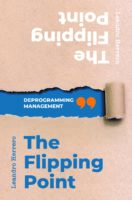I put framing at the top of the list on ‘leadership tasks’. One of those non-rocket sciences around us that we refuse to pay attention to. Because, it’s not rocket science and apparently, in management, we need to reach the rocket sciences qualification to be able to wake up.
Yes, I think that we in business organizations completely underestimate the power of (mental and behavioural) framing to trigger and sustain behaviours, emotions, ways of doing etc.
For me there are 3 aspects of framing that are very simple, and perhaps because of this, we take them for granted, or simply dismiss them. These are my 3:
- Framing of behaviours so that they can be copied and scaled up (creating a particular culture, Homo Imitans)
- Framing of the overall narrative of the organization.
- Framing of the use of data or insights
Let’s start with the simplest components in the behavioural side
On the behavioural side there is plenty of repeated experimental data showing for example how being helped (for example to fix a computer problem) increases the level of collaboration of that particular group of people who has been helped with the people helping them. Collaboration for completely new, different goals. So far you may think, big deal. But here is the trick. The group helped increases collaboration with any other group afterwards, no matter what, versus a controlled group that has not received helped. ‘Helping’ is copied and spreads. It frames the future.
Lots of studies as well on the difference between people in a group that receive a clear ‘thanks’, versus a control group that receive a neutral acknowledgement. Similarly, the thanked group behaves differently afterwards on a number of parameters that have not direct connection with the previous reason-for-the-thanks.
Studies on altruism in neighbourhoods shows similar patterns. Somebody starts, others copy, a critical mass is created, many other houses in the neighbourhood do the same. It becomes normal. No manual on how to be altruistic. No team, no committee.
Corollary is, start your mini-mini-behavioural revolution somewhere and be persistently focused on a couple of very granular behaviours. You don’t have to explain much. Just do it. The more you explain why, the less power. Make it the norm. One off shows don’t work. You will be framing the conversation and seeding behaviours that may even seem small or trivial. If you get used to the technique, you’ll see the benefits grow.
It’s not a particular behaviour because it’s good in itself (I am sure it is) but because you are framing what comes next.
Next…
2. Framing of the overall narrative of the organization.
3. Framing of the use of data or insights
____________________________________________________________________________________




Would you like to comment?